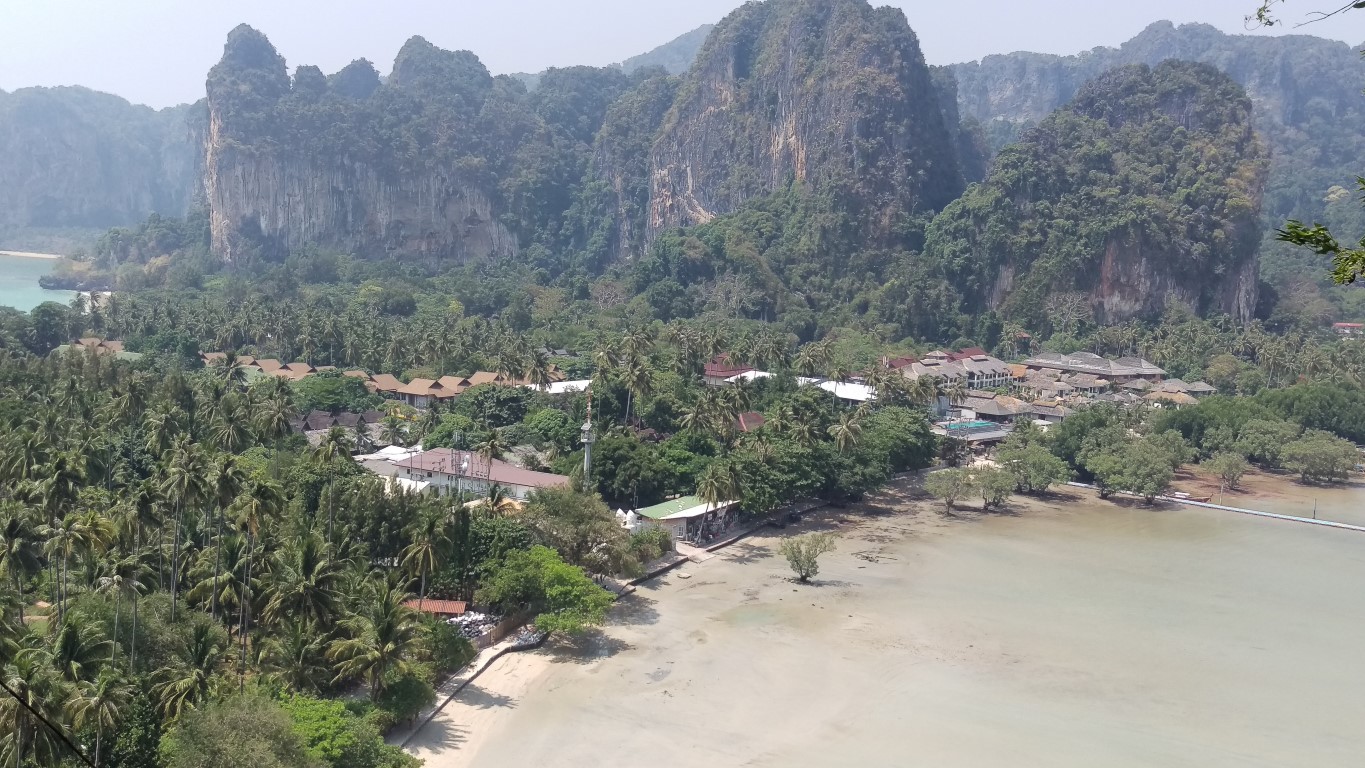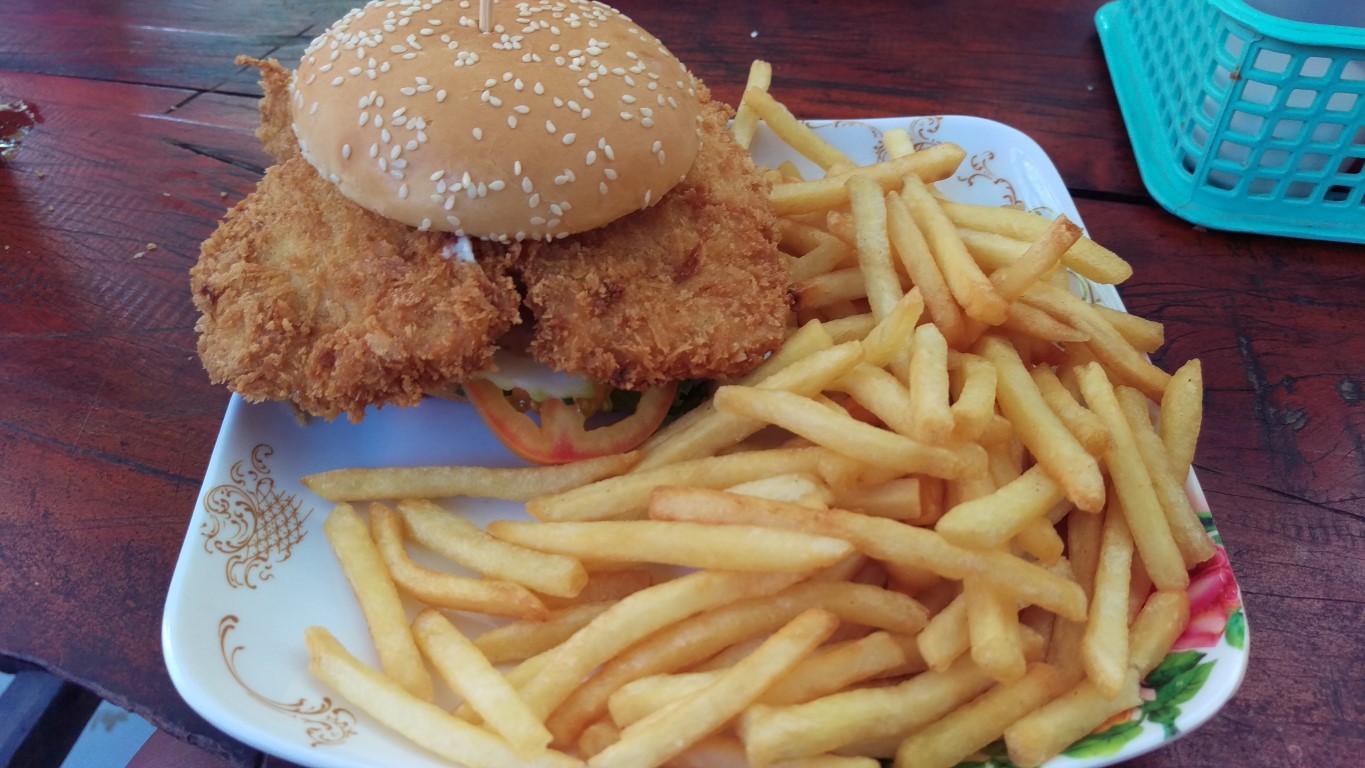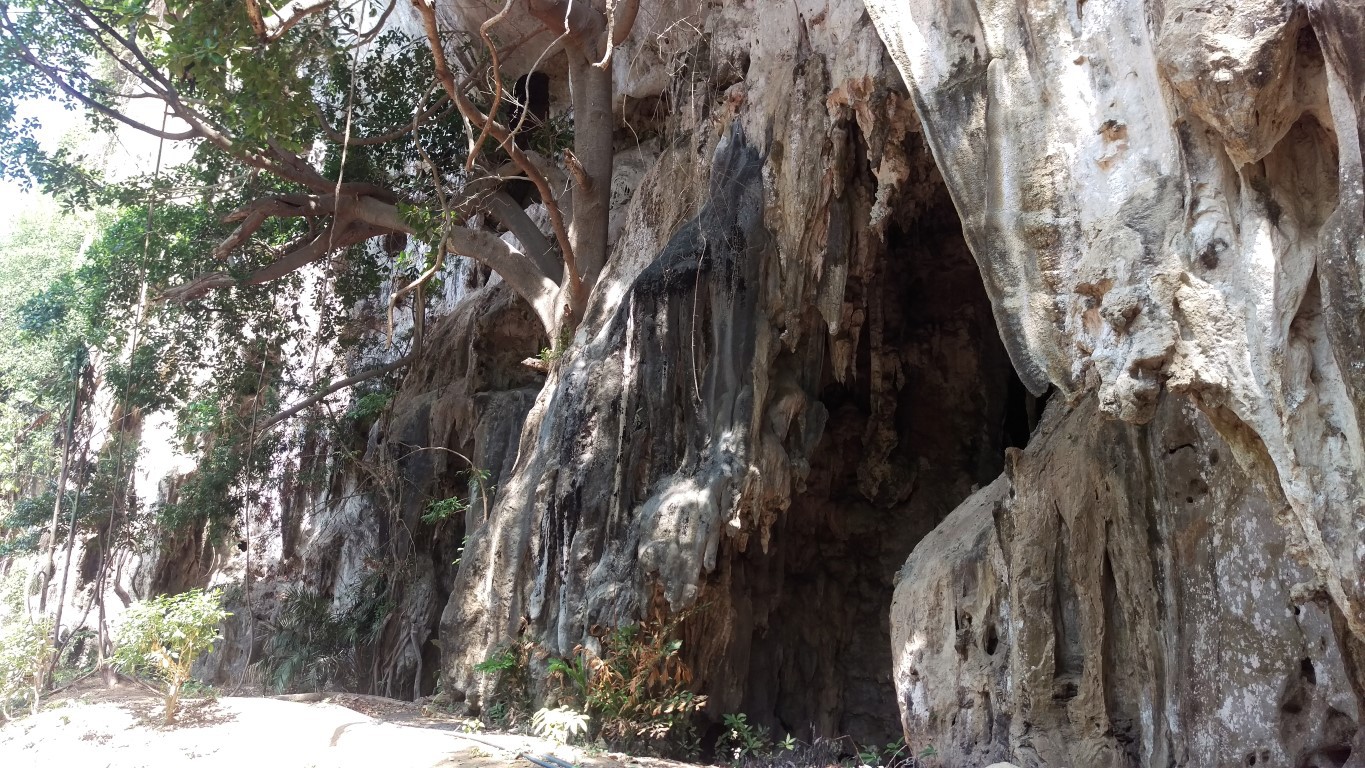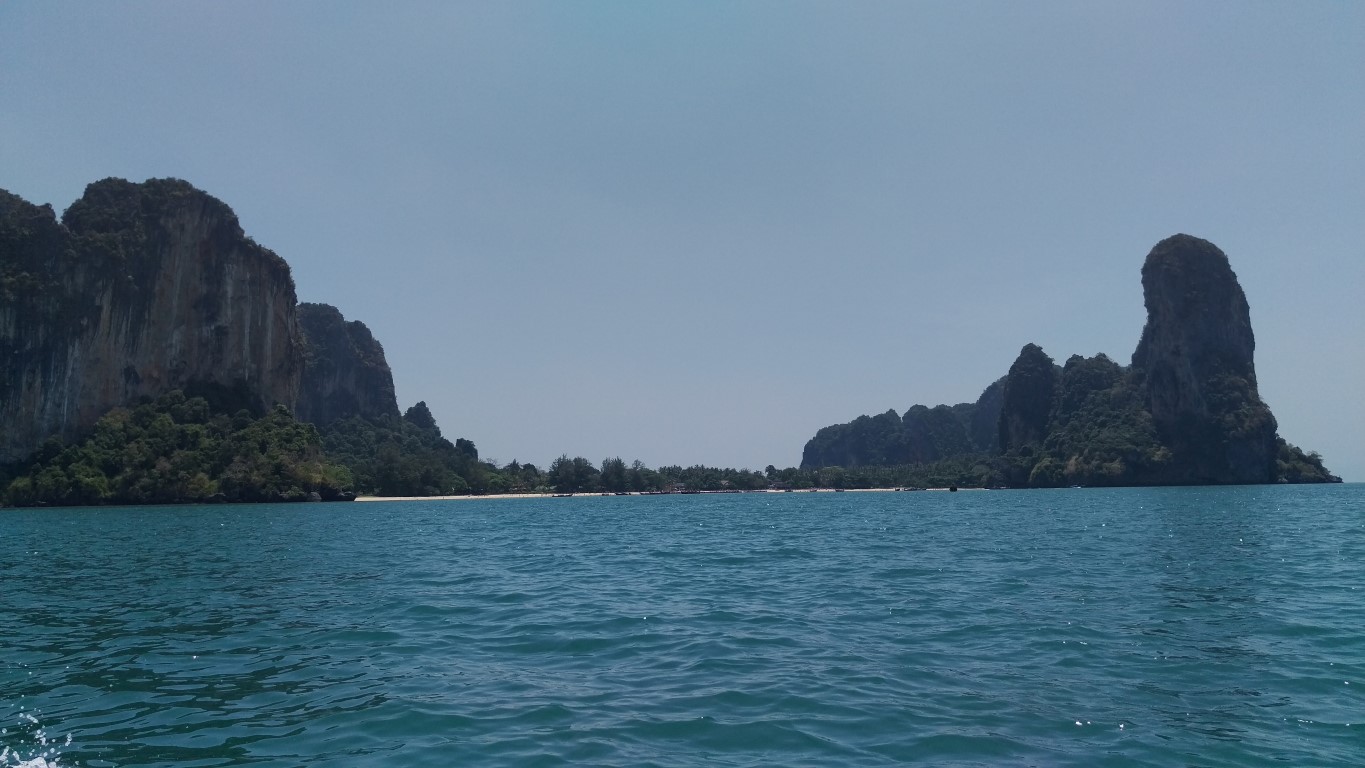Famous for shallow-watered beaches that lay below stunning sheer limestone rock faces. A real haven for beachgoers and adventurers of all ages, and full of adventure and stunning scenery, Tonsai Bay and Railay both hold special places in my heart.
Forbidden Lagoon
A tidal lagoon perched inside one of the higher peaks on the lower end of Railay, the Forbidden Lagoon is a labour intensive adventure not for those faint of heights. (I conquered a lot of fears getting there.) Red clay cliffs are lined with ropes and handholds to help you on your way up and back down to the lagoon. Going up one side and back down again, the trip takes about 40 minutes, and about the same returning. While at the top portion of the trek, however, take a detour to the lookout point. This hilltop spot offers a spectacular view of fields of palm trees and the two sides of Railay beach.

Phra Nang Cave Beach
This beach was unique. It features two caves full of phallic items at the end of a beautiful beach. In the cave, local fishermen leave offerings in the caves to ensure safe travel on the sea, placating the vengeful (lustful) spirit of the sea. Two legends surround the importance of Phra Nang: In one tale, she was a princess who died in a shipwreck. In another, she was a fisherman’s wife. He was lost at sea and she lived out the rest of her days in the cave.

Thai Food To-Go
Hungry beach goers on the Phra Nang side of the area don’t have to go far for eats. About a half dozen modified long tail boats offer some to-go dishes you can eat in your swimsuits. For about $3 a dish, food from boats is served from about 10 am to just before dinner. The BBQ corn on a stick with extra salt was my favourite.
Best (Biggest) Burgers
If you’re on Tonsai side and craving a burger, head to Papa Burger House. Almost a straight shot from the Tonsai boat dock, Papa serves up delicious homemade burgers and the biggest chicken burger I’ve ever seen. Prices are decent at about $5 each, but I assure you, you will not leave hungry.

Inflation
A word of caution: everything – literally everything – needs to be brought to this area by longtail boat. This added transport step means a 20-30% price increase over any other area I’ve visited. It was especially hard to swallow for things you need to, you know, live. Paying $2-$3 for a 1.5L bottle of water may sound like a good deal back home, but when you can’t drink tap water, it adds up.

Driven by a passion for travel and all things marketing. Fuelled by tea and sarcasm, she’s a gypsy at heart with a knack for telling stories.

